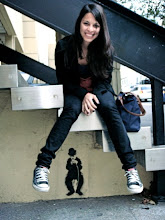
I thought I would not be able to catch The King’s Speech on theaters because the release of non-mainstream films in Boston is rare and scarce. In fact, I was planning a trip to New York City to watch it at MoMA, they were screening it as one of the greatest films of 2010. They categorized the film as “a contender for lasting historical significance—and any true cinephile will want to catch them on the big screen.” So you can imagine how excited I was to find out that they were showing it at Kendal and I could avoid another eventful ride on the Chinese bus.
I thought that the story was captivating and very easy to relate to given that one of the most common fears is public speaking. As a college student, I am constantly required to do presentation, and I have hated the idea of standing in front of a quiet classroom each and every time, Thus, I felt completely related to the main character. Instead of a speech disorder, I have a strong accent that comes out even stronger when I am nervous and in front of people. However, such close identification with the character could only occur because the acting was exceptional. Colin Firth truly transmits the frustration of not been able to let his words flow out of his throat. Such frustration was intensified by the camera work.
The viewer is made aware of the device used. The camera moves freely, following the king closely. It shows his point of view, which at times is terrifying. We are constantly glad we are not actually on his shoes, for example, when he is giving his most important speech.
The mise en scene was thought to its smallest details. However, the greatest attention was given to the walls. They express the feelings and progress of the King. As he begins his therapy, the walls at the Doctor’s office are made of multiple layers of paint and colors which are falling apart and cracking down. However, as he becomes more confidence not only on his own capabilities, but also on his Doctor, the therapy takes place at the Doctor’s house where the walls’ patterns are uniform and well kept. Walls become extremely important when the King is about to give his last speech. Here, the Doctor made the room “more cozy” by putting patterned cloths that made the room similar to his house, giving the illusion of a tight and safe nest. MoMA was completely right. This is definitely a film worth watching in the big screen; a TV set or a computer monitor would tune down such stunning aesthetics.

No comments:
Post a Comment